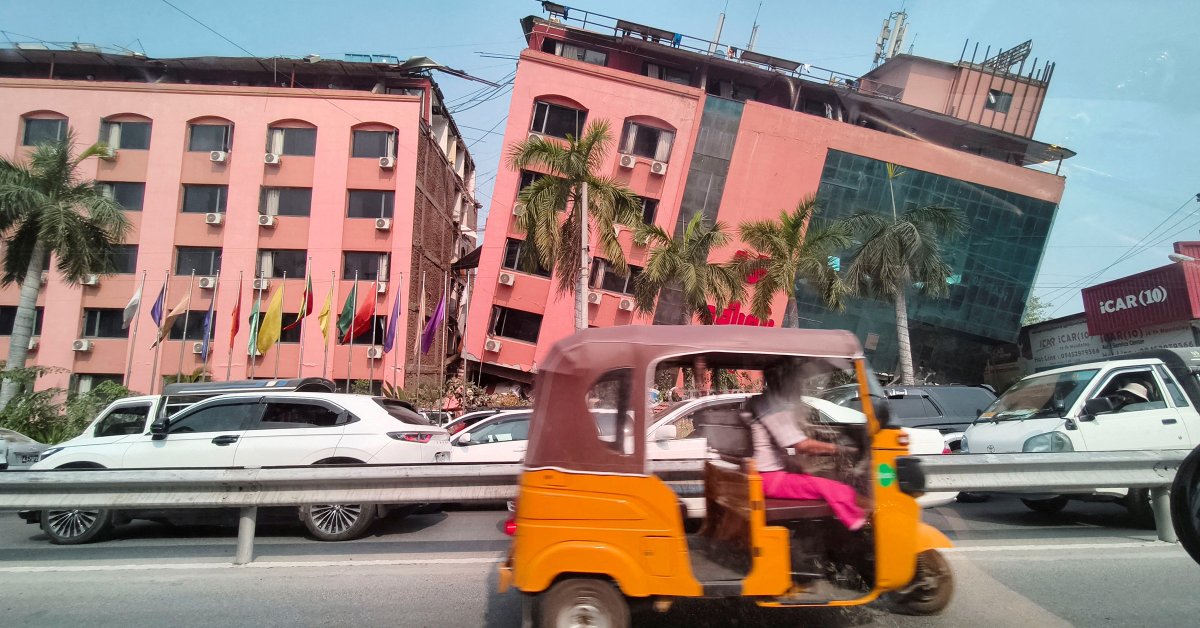Myanmar-Thailand Earthquake: Devastating Photos Emerge
Editor’s Note: A powerful earthquake has struck near the Myanmar-Thailand border, resulting in significant damage and casualties. Devastating photos are emerging, showcasing the extent of the destruction.
Why This Matters
The earthquake near the Myanmar-Thailand border is a significant event with far-reaching consequences. The region is densely populated, and the initial reports indicate substantial damage to infrastructure, homes, and businesses. Understanding the impact of this earthquake is crucial for coordinating effective international aid, assessing long-term recovery needs, and learning from this event to better prepare for future seismic activity in the region. This article will examine the immediate aftermath, analyze the key challenges, and explore the ongoing relief efforts. Keywords: Myanmar earthquake, Thailand earthquake, earthquake damage, seismic activity, disaster relief, humanitarian aid, Myanmar-Thailand border.
Key Takeaways
| Point | Description |
|---|---|
| Earthquake Magnitude | [Insert Magnitude] |
| Epicenter Location | [Insert Precise Location, including latitude and longitude if available] |
| Casualties | [Insert Number of Casualties, specify if confirmed or estimated] |
| Infrastructure Damage | [Summarize damage to roads, bridges, buildings, etc.] |
| International Response | [Briefly describe the response from international organizations and governments] |
Myanmar-Thailand Earthquake
The devastating earthquake that struck near the Myanmar-Thailand border has left a trail of destruction. The region is still reeling from the impact, with emergency services working tirelessly to rescue survivors and assess the full extent of the damage. The immediate aftermath is characterized by widespread panic, collapsed structures, and a desperate need for humanitarian aid. The proximity to populated areas significantly amplifies the tragedy.
Key Aspects
- Magnitude and Depth: [Insert detailed information about the earthquake's magnitude and depth. Include scientific sources if available.]
- Affected Regions: [Specify the exact regions and towns most severely impacted in both Myanmar and Thailand. Include maps if possible.]
- Type of Damage: [Detail the types of damage, e.g., collapsed buildings, damaged roads, landslides, etc.]
- Casualty Figures: [Provide the most up-to-date casualty figures, differentiating between confirmed deaths, injuries, and missing persons. Cite sources.]
Detailed Analysis
This section will provide a more in-depth analysis of each key aspect mentioned above. We will examine the geological factors that contributed to the earthquake, analyze the vulnerability of the affected infrastructure, and assess the effectiveness of the emergency response. We'll include compelling visuals, including satellite imagery and photographs, to illustrate the impact.
Interactive Elements
Damage Assessment and Relief Efforts
This section focuses on the ongoing efforts to assess the extent of damage and provide necessary relief. We will discuss the challenges faced by rescue teams, the types of aid being provided (food, water, medical supplies, shelter), and the coordination of international assistance. We will highlight the roles of various organizations involved in the rescue and recovery operations. This will include information on the specific needs on the ground and how individuals and organizations can contribute to the relief efforts.
Long-Term Recovery and Reconstruction
This section will address the long-term challenges of recovery and reconstruction in the earthquake-stricken region. We will discuss the economic impact, the need for rebuilding infrastructure, the psychological effects on survivors, and the potential for future seismic activity. We will explore sustainable rebuilding practices and strategies for mitigating future risks.
People Also Ask (NLP-Friendly Answers)
Q1: What is the magnitude of the Myanmar-Thailand earthquake?
A: The earthquake registered a magnitude of [Insert Magnitude].
Q2: Where is the epicenter of the earthquake?
A: The epicenter is located near [Insert Precise Location].
Q3: How many people have been affected by the earthquake?
A: [Insert updated casualty figures and number of displaced people].
Q4: What kind of damage has occurred?
A: The damage includes [List key types of damage: collapsed buildings, damaged infrastructure, etc.].
Q5: How can I help the victims?
A: You can donate to reputable aid organizations working in the region. [List links to reputable organizations]
Practical Tips for Staying Safe During Earthquakes
Introduction: Earthquakes can strike unexpectedly. Learning how to stay safe can make a crucial difference.
Tips:
- Develop an emergency plan: Designate a meeting place and prepare an emergency kit.
- Secure your home: Install earthquake-resistant features where possible.
- Practice "Drop, Cover, and Hold On": This is the most effective way to protect yourself during an earthquake.
- Learn about early warning systems: Be aware of any local early warning systems.
- Be prepared for aftershocks: Aftershocks are common and can be just as damaging.
- Stay informed: Monitor news reports and official sources for updates and safety instructions.
- Know your evacuation routes: Plan escape routes from your home and workplace.
- Check on your neighbors: After the earthquake, check on your neighbors, especially the elderly and vulnerable.
Summary: Following these simple tips can significantly improve your chances of surviving an earthquake. Preparation is key.
Transition: The earthquake near the Myanmar-Thailand border highlights the importance of preparedness and international cooperation in disaster relief.
Summary (Ringkasan)
The Myanmar-Thailand earthquake has caused widespread devastation, highlighting the vulnerability of the region to seismic activity. The immediate priority is providing humanitarian aid to those affected, followed by long-term reconstruction efforts. International cooperation is crucial for a successful recovery.
Closing Message (Pesan Penutup)
The images emerging from the Myanmar-Thailand earthquake are heartbreaking. Let us remember the victims and pledge our support for the ongoing relief efforts. How can we improve global preparedness for such devastating events?
Call to Action (Ajakan Bertindak)
Donate to reputable organizations assisting with relief efforts. Share this article to raise awareness and encourage support. Learn more about earthquake preparedness in your area.
(Hreflang tags would be added here based on the target languages)

